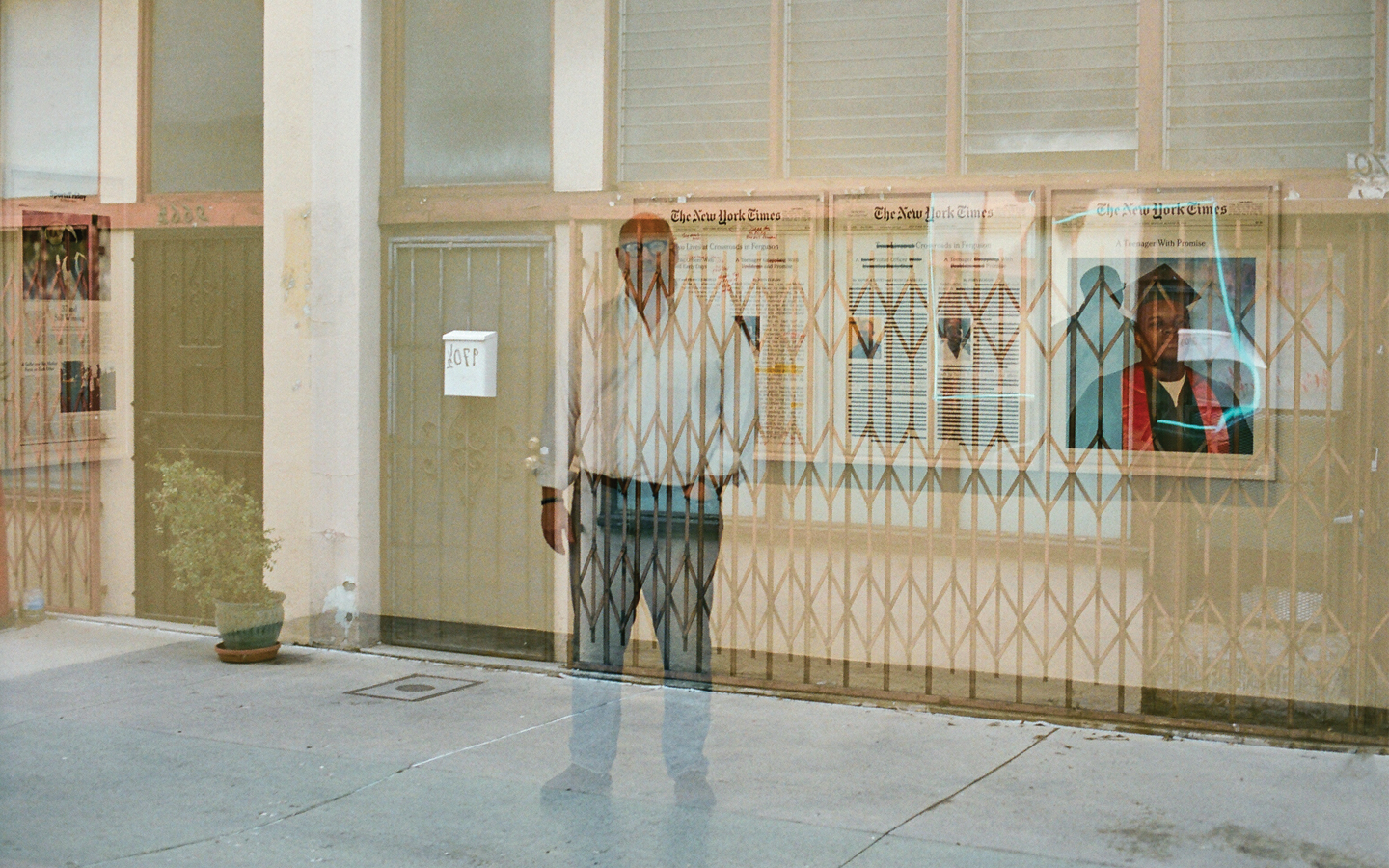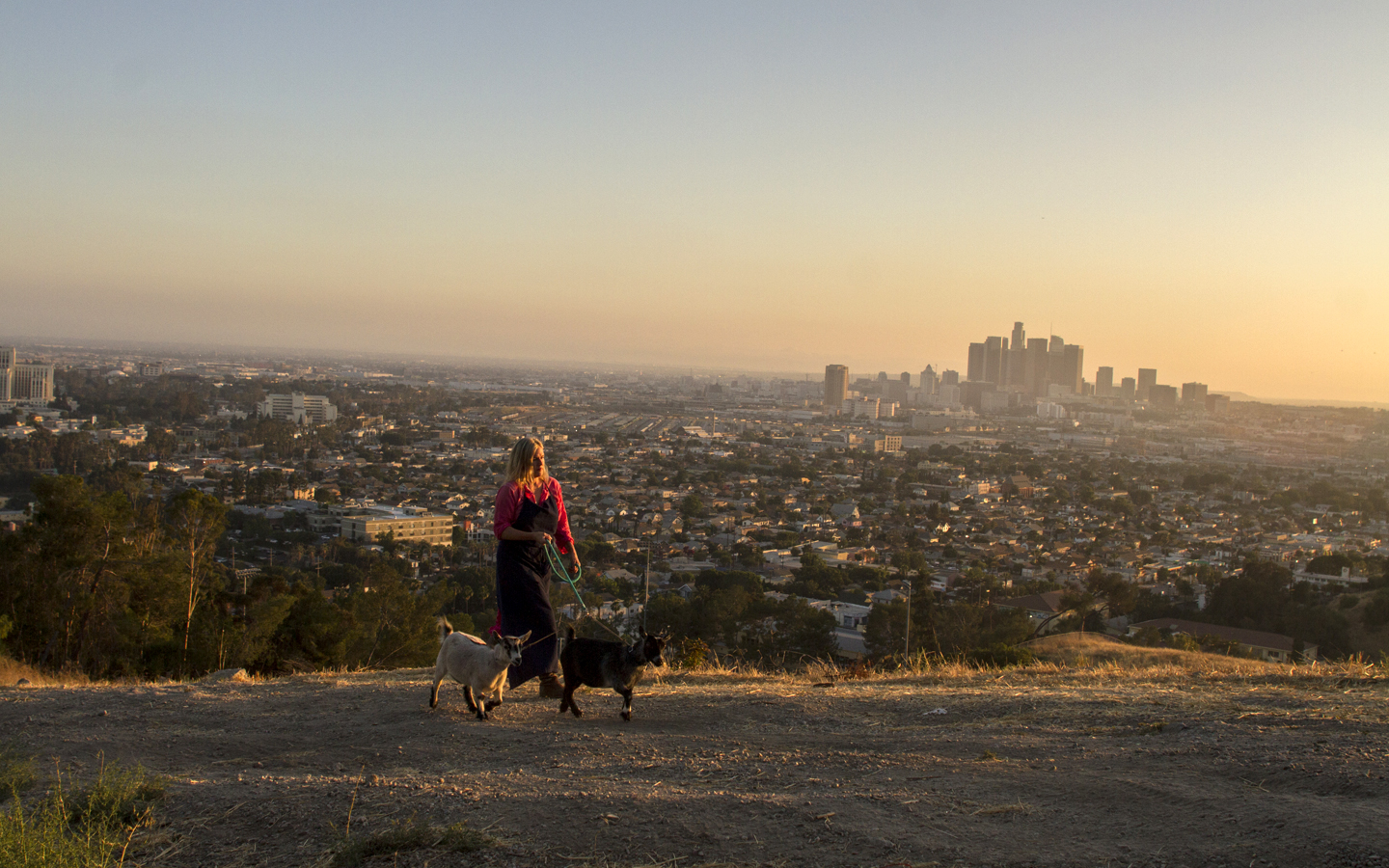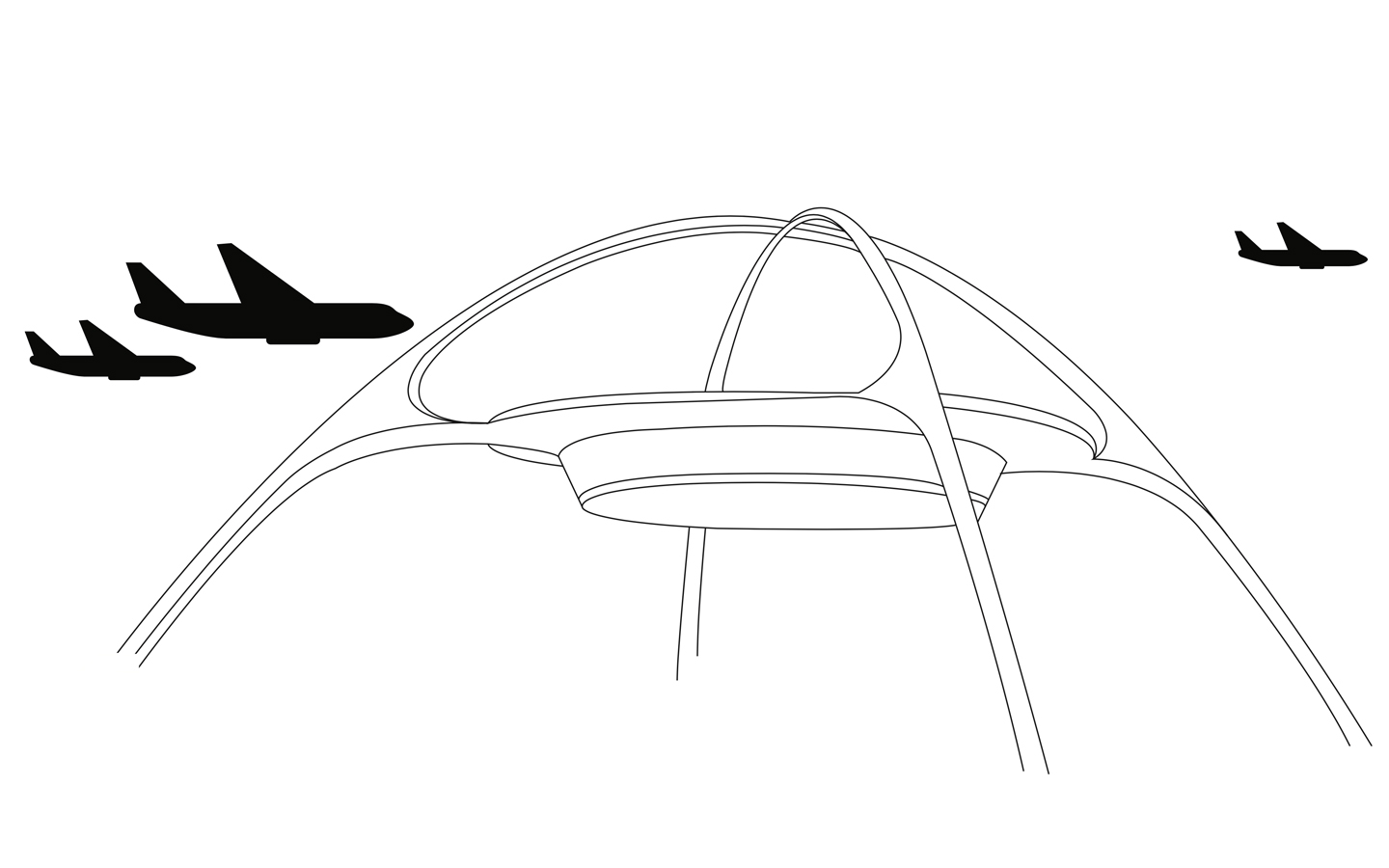
Charlie James of Charlie James Gallery
TEXT HANNAH MARTIN
VISUAL ASHLEY GUO
Tucked away between a few closed shops with bars over their windows and an older man methodically hosing off the cement is the Charlie James Gallery. I might have walked past it had it not been for the tubes of blue neon lining its two front windows. Inside the Chinatown gallery, I’m met by large silkscreened diptychs and triptychs of newspaper articles. The face of Michael Brown, the eighteen-year-old who was shot to death in the street by a white police officer, sits in a cap and gown under the headline “A Teenager With Promise.” Next to it is the original New York Times article, which artist Alexandra Bell has covered with red ink and yellow marker.
Charlie James comes down from his office drinking an iced coffee. He makes a brief introduction, and then the words start coming quickly. Charlie James is extremely passionate about art, and he doesn’t waste time. I fumble with my recorder as he begins to tell me about Alexandra Bell, a multidisciplinary artist with a degree from the University of Chicago and a Masters in Journalism from Columbia University.
“She’s really smart,” James effuses.
In her aptly named collection, Counternarratives, Bell applies editorial feedback and poetic redaction to New York Times articles to correct for racial biases within the media, thus revealing new narratives. Her diptychs and triptychs make it impossible to ignore the covert prejudice within the original pieces.
“At the end of the day, things get boiled down, you know? Particularly after long periods of time, the work—the art that’s left—marks the time of its making.”
James makes it a point to showcase artists that do just this. Whether it’s Alexandra Bell addressing racial bias, Romiro Gomez addressing issues of immigration by carving out spaces within famous paintings for labor workers, or Eske Kath exploring the devastating effects of global warming through pops of color on linen, the artists who show at the Charlie James Gallery are working to give an honest representation of the world’s current condition.
James’ clear passion for this kind of art was the catalyst that eventually lead him to open his own gallery. James lived in Seattle, collecting art and working for Microsoft, for twelve years. He’d worked a headset job while in graduate school, which eventually led him to Microsoft.
“At Microsoft, I had this opportunity to make like, real money—like software sales and all this stuff— and I kind of put my toe in it. [Then] I went to a convention for software sales shit and I was like, I fucking hate this.”
So in what James describes as a midlife crisis (and what I enthusiastically refer to as a midlife breakthrough), he decided to shift gears—or rather, scrap the whole car. He took his knowledge and keen eye for art and translated those skills into a business. He uprooted his life in Seattle, moved to Los Angeles, and opened the Charlie James Gallery during the 2008 financial crisis.
“I kind of just pulled the chute. I figured if I’m going to do this, I have to do it before I’m forty, you know, where I’m still kind of energetic—before I’m bummed out about everything,” he laughs. “So at thirty-eight, I quit Microsoft.”
The shift from Seattle software sales guy with a bluetooth in his ear to Chinatown gallery owner ended up being organic because the latter was always a truer fit.
“I was maybe going to be an English professor. So I studied deconstruction, structuralism, post- structure, and all that kinda good Frenchy stuff in grad school and undergrad; my core values were always identified as creative. The tech career was a happy accident—everything’s a happy accident. The tech career is where I gained confidence and skills and learned how to manage projects, really invaluable stuff. People think, ‘Oh, you worked at Microsoft, so you must be good at business.’ I was never a financial guy. But I’m the best project manager in the world—meaning I don’t drop balls.”
At the peak of the financial crisis, when many other galleries in Chinatown were going out of business, Charlie James was just starting out. If it seems like a risky choice, that’s because it was.
“I knew five people in LA. That is not an exaggeration. I didn’t have any collectors or anything when I started. I just moved here. Which is dumb! You can’t do it that way. But we worked really, really hard, and had some fortune smile on us.”
Just thinking about opening an art gallery in Los Angeles with little to no connections in the city gives me heart palpitations. But James wasn’t starting empty-handed.
“The way I was able to start was I’d been collecting art, so I knew dealers and I knew artists, and everybody wants to show in LA. So what I could do is take good dealers and artists that were from other cities—San Francisco, New York—and give them a show in LA. And they all said yes.”
While the transition was organic, that isn’t to suggest that it was easy. There were a lot of hidden expenses and a lack of clients in the beginning. If you don’t already know, opening your own gallery is a quick way to lose all of your money if you don’t do it right; and even if you do, there’s really no guarantee. But there was a key difference this time around for James.
“When I was working for big companies, I was always like, ‘I’m working for the man so I’m going to cheat on my expense reports.’ But once I put my name on it, I was like, ‘Fuck that last minute shit. Given time, resources and everything, have we given our best?’ You find peace when you know you’ve done the best you can.”
One of the biggest takeaways from meeting with Charlie James, and I think a reason his gallery has been so successful, is not his passion for art— that’s a given. (When asked about what artists he was excited about, he answered, “All of them.”)
It’s the importance he places on the responsibility of art to represent the underrepresented and to transform mainstream narratives.
“The most fortunate art objects that are ever made in the history of the world have a purpose at the end of the day—beyond inspiration, self- expression, beyond these transitory things. They mark the progress of the human project.”




